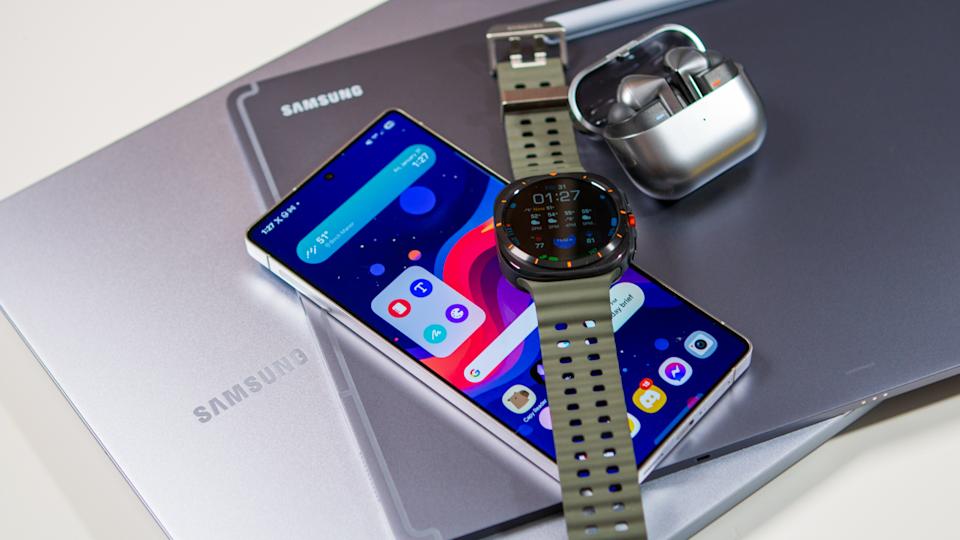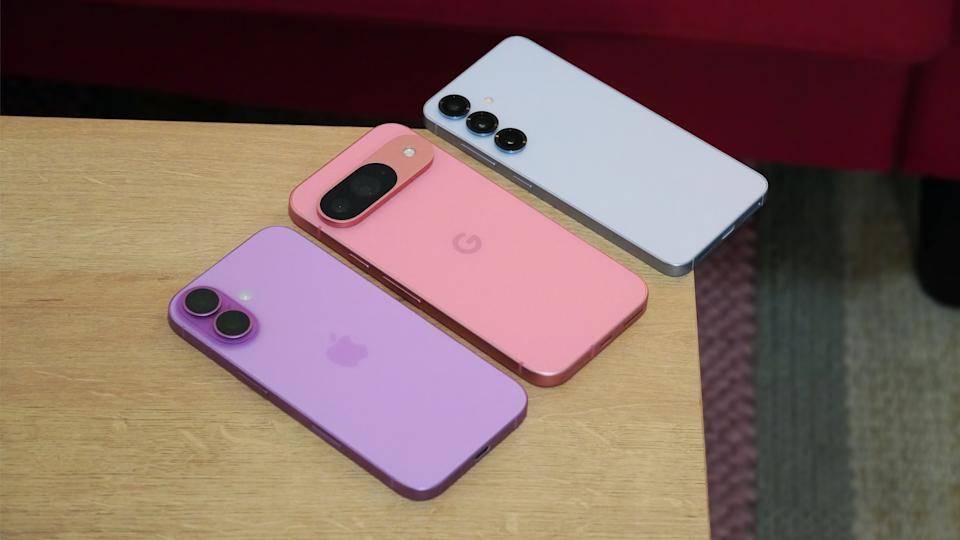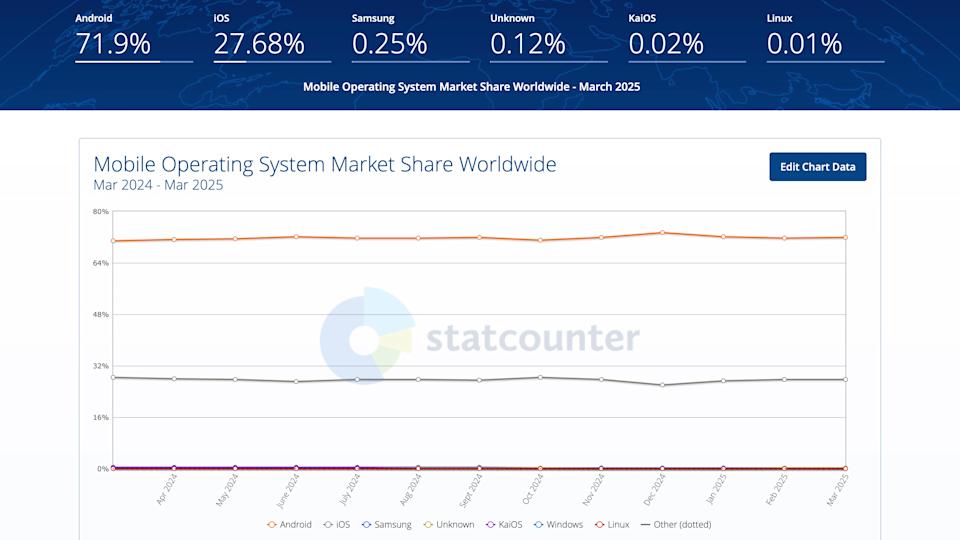In a technology landscape dominated by the behemoth that is Apple, Android users often find themselves on the periphery, forced to play catch-up to the iPhone’s seemingly endless stream of premium features and seamless updates. For those loyal to the Android ecosystem, the frustration is palpable – a sense of second-class citizenship that’s been festering for far too long. In a recent article, Android Central poses a provocative question: are Android users tired of being treated as an afterthought, relegated to a secondary status in the eyes of manufacturers and tech enthusiasts alike? As we explore the complexities of Android’s uphill battle, one thing becomes clear: the time has come for a change.
The Android Paradox: Why Google’s OS Falls Behind iOS

When it comes to market share, Android may dominate globally, but in the US, iOS reigns supreme. According to StatCounter data, iOS holds over 57% of the US market share, leaving Android with a mere 42%. This stark contrast raises questions about why Android, despite its global popularity, lags behind iOS in terms of market share and app availability in the US.

Market Share and App Availability
While Android’s global market share exceeds 70%, its US market share tells a different story. iOS’s dominance in the US market is mirrored in app availability, with many new apps arriving on iOS before making their way to Android. Notion Mail, an app that has generated significant excitement, is a prime example. Available on iOS and macOS, but not yet on Android, it highlights the disparity between the two platforms.
So, why do developers often prioritize iOS over Android? The answer lies in the challenges of developing for Android, where platform limitations and the need to test and account for multiple devices and form factors create significant hurdles.

Challenges of Developing for Android
The Notion Mail example is instructive. The developer’s focus on iOS and macOS first is a deliberate choice, driven by the relative ease of developing for those platforms. In contrast, Android’s fragmentation, with its numerous devices and form factors, creates a complex development environment that can deter developers.
Developer complaints about the difficulty of developing for Android are nothing new. The need to test and account for multiple devices, screen sizes, and Android versions adds layers of complexity that can be overwhelming. Even Google’s efforts to simplify the development process have not been enough to bridge the gap.
The numbers are telling. Apple’s current lineup of seven iPhone models and 13 devices in total pales in comparison to Samsung’s 20+ phones and tablets, and Google’s eight devices. The sheer diversity of Android devices creates a daunting task for developers seeking to optimize their apps across the Android ecosystem.
Google’s Efforts to Close the Gap
Google has made significant efforts to bridge the gap between Android and iOS development. However, despite these efforts, challenges persist. The complexity of Android’s device landscape remains a significant hurdle for developers, making it difficult for them to create a unified app experience across the vast array of devices.
While Google has endeavored to simplify the development process, the sheer diversity of Android devices, with varying screen sizes, form factors, and operating system versions, continues to pose significant challenges. As a result, developers often prioritize iOS development, where the more streamlined device lineup and unified ecosystem make it easier to create and maintain apps.
The Device Dilemma
Apple’s Simplified Lineup
Apple’s device lineup is remarkably streamlined, with only 13 models across three screen sizes. This simplicity makes it easier for developers to create apps that are optimized for each device, resulting in a more seamless user experience.
Google and Samsung’s Complex Offerings
In contrast, Google and Samsung offer a vast array of devices, with over 30 models to account for. This complexity creates a significant challenge for developers, who must test and optimize their apps across multiple devices, screen sizes, and form factors.
Implications for Developers
The complexity of Android’s device landscape has significant implications for developers. With so many devices to account for, developers must prioritize their development efforts, often focusing on the most popular devices and neglecting others. This can result in a fragmented app experience, where users may not have access to the same features and functionality across different devices.
Practical Implications for Android Users
Delayed App Availability
The consequences of iOS receiving new apps before Android are palpable. Android users often experience frustration when they are unable to access new apps, features, and functionality as quickly as their iOS counterparts. This delay can be attributed to the complexity of Android’s device landscape, which makes it more challenging for developers to create and maintain apps.
Device Choice and Fragmentation
The vast array of Android devices can lead to fragmentation, making it difficult for developers to create a single, unified app experience. This fragmentation can result in users experiencing different app functionality, features, and performance across different devices.
Google’s Responsibility
Google bears a significant responsibility in addressing the challenges faced by Android developers and users. By streamlining device offerings and development tools, Google can create a more unified and efficient development environment, ultimately leading to a better app experience for Android users.
Conclusion
As we conclude this article, it’s clear that the frustration with Android being a second-class citizen to the iPhone is a sentiment shared by many in the tech community. The article highlights the discrepancies in software updates, security patches, and feature support, which create an uneven playing field for Android users. The debate surrounding Google’s own Android ecosystem and its limitations has sparked a heated discussion, with some arguing that it’s time for a change.
The significance of this topic lies in its implications for the future of Android and the impact it has on users. As technology continues to advance at a rapid pace, users expect seamless and efficient experiences across all devices. The current state of Android is a far cry from this ideal, and it’s up to manufacturers, Google, and the ecosystem as a whole to address these issues. The future of Android will be shaped by the decisions made now, and it’s crucial that stakeholders prioritize user experience and equality.
As we move forward, one thing is certain: Android users deserve better. It’s time for a shift in the way we approach Android development, prioritizing user needs and creating a more level playing field. By doing so, we can create a more inclusive and user-friendly ecosystem that benefits everyone, regardless of device choice. The question remains: will the Android community come together to demand change, or will we continue to settle for a second-class experience? The future is in our hands.
